Research - (2020) Advances in Dental Surgery
Secondary Care Delay in Diagnosis and Treatment of Oral Cancer at Asir Central Hospital, Saudi Arabia: A Case Series Study
Hussain Almubarak1, Mohammad Almagbol2, Saad Albishri2, Bayan Dulim, Yusra Alshahrani2, Afnan Mohammed2, Abdulrahman Alshehri2, Ibrahim Alsharif2, Sultan Mohammed Kaleem1 and M Zakirulla3*
*Correspondence: M Zakirulla, Department of Pediatric Dentistry and Orthodontic Sciences, College of Dentistry, King Khalid University, Abha, Kingdom of Saudi Arabia, Tel: +966530518766, Email:
Abstract
Background: The stage of disease at the diagnosis of oral cancer is thought to be a significant factor in prognosis and outcome. Unfortunately, we continue to diagnose almost 2/3 of these cancers at advanced stages of disease despite the ongoing research for devices/methods to aid the clinicians in detection and accurate oral mucosal lesion diagnosis. This paper explores both the nature of oral cancer and the adjuncts available for detection and presents the current issues in diagnostic delays of oral cancer detection. Aims: To estimate the professional delay between the first consultation till confirming definitive diagnosis and initiation of treatment of oral cancer patients at Asir central hospital. To determine demographic distribution, site, and stage of tumor presentation at the time of diagnosis & to determine referral time needed to refer a patient from Asir central hospital to tertiary hospitals or other medical centers. Materials & Methods: This study design is a case series-based study done on patients who are preliminarily diagnosed as having oral cancer and is focused on the secondary care delay occurring in diagnosing and initiation of treatment at Asir Central Hospital in the southern province of Saudi Arabia, Abha from 1st of January 2005 till 31st December 2015. A convenience sampling was done and a data extraction form was used to collect relevant details of the patient's age, gender, site, type and staging of the tumor, the time of the first consultation with a health care provider, time of completing the histopathologic report and the time of initiation of treatment. Data analysis was done by using SPSS software, and statistical analysis was done to frame the results. Results: Out of 63 patients consulted in the time period of one year, 36 were males, and 27 were females, and 95.2% (60) were Saudis, and 4.8% (3) were expatriate subjects. The mean age of the study subjects is 61years standing between 29 years to 69 years of age. Twenty-eight subjects (44.4%) were unknown of oral cancer on their first consultation, and 35 subjects (55.5%) are directly referred through the first consultation with a dentist or a physician. Based on the analysis of results, the tongue followed by the floor of the mouth were the most common sites of the tumor and the majority of cases were diagnosed as squamous cell carcinoma (77.8%) followed by basal cell carcinoma (6.3%) and non-Hodgkin’s lymphoma (4.8%). Sixty-one subjects were considered as oral cancer cases based on their histopathological diagnosis, and two subjects were excluded from the study as they were benign tumors at the time of diagnosis. Most reported cases are in stage 2 (29.5%), followed by stage 1 (3.2%), and in (67%) of patients, the staging was not reported. Conclusions: Timeline analysis between the first consultation till the date of final diagnosis reveals a mean time of 24.27 days in 54% of cases, and 18.2% were diagnosed on the same day. Timeline analysis for the time needed between the final diagnosis to the initiation of treatment resulted in 82 days approximately. The most prolonged time interval noted was 2yrs 26months, and the shortest interval is 1day. Further investigations are needed to assess diagnostic delay components more comprehensively and at a larger scale. This study highlights the structural needs to improve the quality of the health care services by closing the gaps and addressing the delay issues in the diagnosis and treatment of oral cancer.
Keywords
Oral cancer, Diagnosis, Secondary care delay
Introduction
Oral cancer is one of the most prevalent cancer worldwide, A high incidence rate was reported in India, Australia, France, Brazil, and southern Africa. The differences could be related to races, genders, population habits, life expectancy, preventive programs, quality of medical records, and access to health care [1-3]. In Saudi Arabia, Oral cancer accounts for 4.2% of all reported cancer types [4]. The prevalence of oral cancer varies from 21.6% to 68.6%, with the highest being reported in the southern region, especially in Jazan, 32.1% to 62.4% [4,5]. The major risk factors are tobacco and alcohol, but general malnutrition, iron-deficiency anemia, reverse smoking habit, betel quid (PAAN), and many other conditions are associated with elevated risk for oral cancer [6,7]. In Saudi Arabia, there is an increasing rate of smoking; in fact, “shamma” a mixture of smokeless tobacco, is the leading cause of oral cancer in Saudi Arabia. This explains the high prevalence rates in Jazan, where shamma is commonly used. Alcohol restrictions, due to religious and cultural reasons, may not reflect the actual risk level of alcohol as a modifying agent in this part of the world [8-10].
The Human papillomavirus (HPV), especially types 16 and 18, is strongly associated with HPV-related cancers, particularly oropharyngeal carcinoma. However, HPV has not been considered as a significant risk factor in developing oral squamous cell carcinoma since it is associated with only 1%-10% of all oral squamous cell carcinoma [11,12]. The incidence rate of HPV-related Oropharyngeal Squamous Cell Carcinoma (OPSCC) has increased since the last two decades, mainly in economically developed countries such as the USA, Canada, Japan, and Sweden. The change in sexual behavior is suggested to be the cause of that increasing trend [12]. The conventional oral examination is still the gold standard in screening oral suspicious lesions, although many adjunctive diagnostic technologies have been introduced to help in detecting oral cancer at early stages; likewise, the gold standard in the diagnosis remains to be the scalpel biopsy [13,14]. The most common histopathologic type is squamous cell carcinoma, which represents about 90% of the cases. Currently, the primary treatment modality of oral cancer is surgery with or without radiotherapy and chemotherapy as an adjuvant treatment [15,16]. Surgery may have limitations in disease control when a patient has distant metastatic cancer or, in those advanced cases invading vital structures such as carotid artery, orbital cavity, and skull base. Treatment complications include mucositis, infection, and osteoradionecrosis of the jaw. The risk of developing radiation-induced cancer may also be increased after radiotherapy. The adverse effects on esthetics and function may contribute negatively to the quality of life [17-21].
The most important prognostic factor in determining the possible outcome is the stage at which cancer was diagnosed [22]. Unfortunately, about 70% of the cases are diagnosed with late-stage cancers, which results in poor 5-year survival rates that have not improved significantly for many decades [23]. The slight increase of the 5-year survival from 52.8% to 66.2% is attributed to diagnostic delay. The early detection of cancer may increase the 5-year survival rates to more than 80%, but the rates may drop below 30% in those cases with advanced disease. The treatment options could also be limited, time-consuming, and more costly. Radical surgical treatment may lead to disfigurement, social isolation, and higher levels of morbidity or mortality [24].
Diagnostic delay is defined as the time from the first signs or symptoms to the time of definitive diagnosis. This time interval varied and was reported to be five to six months [25,26]. For example, it is longer than three weeks in Greece, 1.5 months in Spain, and it could reach up to 3 to 4 months in other countries such as Canada, Italy, Denmark, and Israel [25]. The diagnostic delay could be classified as ‘‘patient delay’’, which is the time interval between the patient first noticing signs and symptoms to the time of the first consultation with a health care provider; and ‘‘professional delay’’, which is the time interval from the first consultation with a health care provider to the final histological diagnosis of malignancy [24-26]. The time interval from the first contact with a health care provider to the start of the treatment is called “system delay”. This time interval covers the systemrelated factors such as scheduling, referrals, and other administrative procedures [26-28]. It could be further divided into primary care delay, secondary care delay, and tertiary care delay. Another way to look at diagnostic delay is by breaking it down into four steps: from the onset of signs or symptoms to the first visit to a health care provider; from the first visit to the patient’s referral; from the patient’s referral to the first consultation at a specialized center, and finally, from the first consultation with a specialist until confirming the final diagnosis. The heterogenetic nature of cancer as a disease, with its wide range of biomolecular, make-up, morphological changes, and various clinical presentations, should not be ignored as a potential factor in the diagnostic delay [23-29].
It is important to note that the definition of the diagnostic delay, the components, the start point, the endpoint, and the durations may be reported with different criteria in the literature. For example, some authors included the patient delay component as an integral part of the diagnostic delay itself; others distinguished those components and considered them as separate entities [25-28]. Furthermore, the diagnostic delay, by definition, extends until the final histopathological diagnosis is achieved, but the patient may encounter another form of delay, treatment delay, from the time of confirming that final diagnosis until the initiation of the treatment. However, some reports considered the time needed for scheduling and referrals, also known as the referral delay, as an integral component of the diagnostic delay even after reaching to the final diagnosis of cancer. Such variations in the diagnostic delay criteria are especially important in head and carcinoma since only a limited number of studies published in comparison to other types of cancer such as melanoma, colorectal, breast, and bladder carcinomas. The major time intervals of the diagnostic delay of oral cancer were collectively represented as a diagram based on/modified from multiple sources in the literature [29,30] (Figure 1).
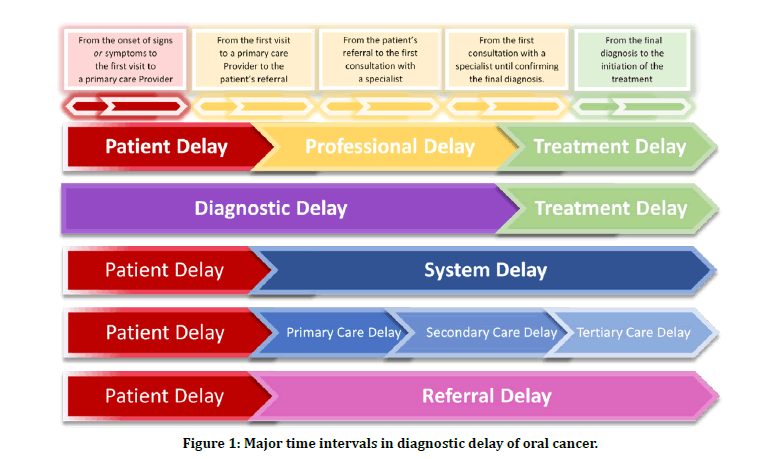
Figure 1: Major time intervals in diagnostic delay of oral cancer.
This study aims to estimate the professional delay, from the first consultation with a health care provider at Asir Central Hospital, or a secondary care hospital, until confirming the definitive diagnosis and to explore related professional factors that may cause any diagnostic delay and the treatment delay from the final diagnosis to the initiation of the treatment of the oral cancer patients visiting Asir Central Hospital.
Specific objectives of the study
To determine the following:
Demographic Distribution of the patients.
Site of the tumor.
Stage of tumor upon diagnosis.
Time between the first consultation with a health care provider to diagnosis.
Time between diagnosis to the start of treatment.
Referral time needed from Asir Central Hospital to tertiary hospitals/medical centers.
Materials and Methods
This study design is a case series-based study done on patients who are preliminarily diagnosed as having probable oral cancer and is focused on the secondary care delay occurring in diagnosing and initiation of treatment at Asir Central Hospital in the southern province of Saudi Arabia, Abha from 1st of January 2005 till 31st December 2015. A convenience sampling was done, and a data extraction form was used to collect relevant details of the patient's age, gender, site, type and staging of the tumor, the time of the first consultation with a health care provider, time of completing the histopathologic report and the time of initiation of treatment. Data analysis was done by using SPSS software, and statistical analysis was done to frame the results.
Results
Out of 63 patients consulted in the period of one year, 36 were males, and 27 were females, and 95.2% (60) were Saudis, and 4.8% (3) were Expatriate subjects (Figure 2). The mean age of the study subjects is 61years standing between 29yrs to 69yrs of age (Table 1). 28 subjects (44.4%) were unknown of oral cancer on their first consultation, and 35 subjects (55.5%) are directly referred through the first consultation with a dentist or a physician (Figure 3). The most common cancer site was the tongue followed by the floor of the mouth. The majority of cases were diagnosed as squamous cell carcinoma (77.8%) followed by basal cell carcinoma (6.3%) and non-Hodgkin’s lymphoma (4.8%). Sixty-one subjects were considered as oral cancer cases based on their histopathological diagnosis, and two subjects were excluded from the study as they were benign tumors at the time of diagnosis. Most reported cases are in stage 2 (29.5%), followed by stage 1 (3.2%), and in (67%) of cases, staging was not reported (Figures 4 and 5). Timeline analysis between the first consultation till the date of final diagnosis reveal mean time of 33 cases (54%) was 24.27 days, and 18.2% were diagnosed on the same day (Table 2 and Figure 6). Timeline analysis for the time needed between final diagnosis to that of initiation of treatment resulted in 82.35 days, approximately in the meantime needed for 17 subjects receiving treatment at Asir Central Hospital. The longest time interval noted was 2yrs,26months & 1day and the shortest interval is 1day (Table 3 and Figure 7). Those patients who need surgery were reported to have a relatively shorter time before initiation of treatment. The distribution of treatment shows that surgery was the most frequent treatment provided (20.6%) followed by palliative care in 12.7% of cases. The data for 60.3% of cases were not reported (Table 4) (Figures 8 and 9).
Figure 2: Distribution of subjects based on their sex and nationality.
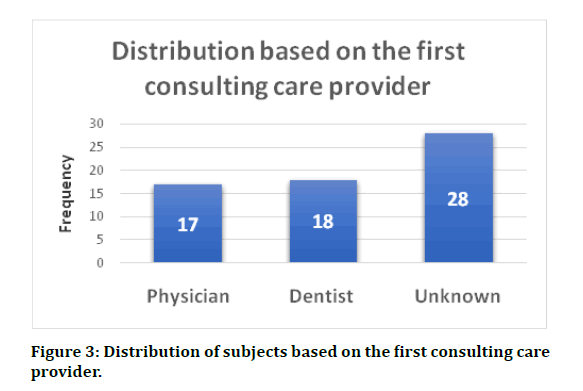
Figure 3: Distribution of subjects based on the first consulting care provider.
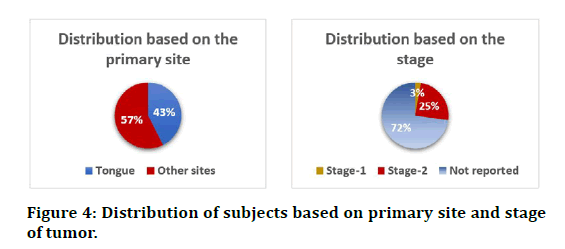
Figure 4: Distribution of subjects based on primary site and stage of tumor.
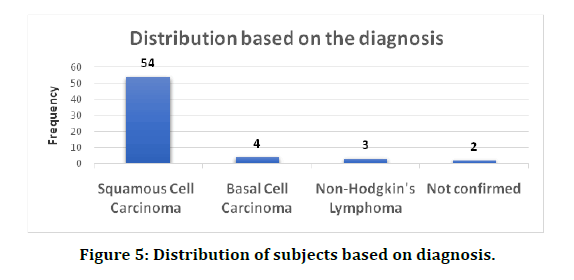
Figure 5: Distribution of subjects based on diagnosis.

Figure 6: Timeline analysis between first consultation till date of final diagnosis.
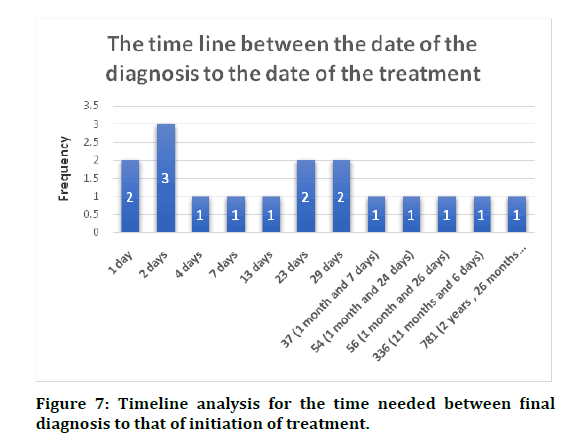
Figure 7: Timeline analysis for the time needed between final diagnosis to that of initiation of treatment.
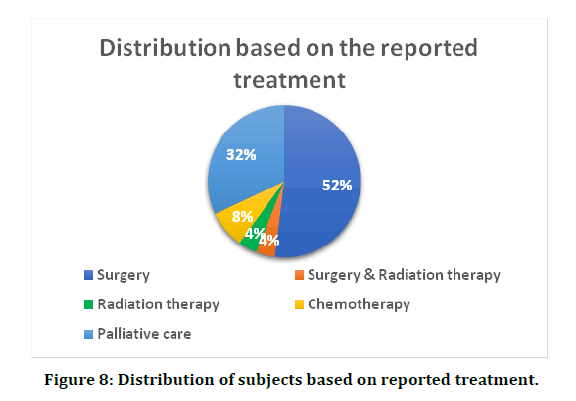
Figure 8: Distribution of subjects based on reported treatment.
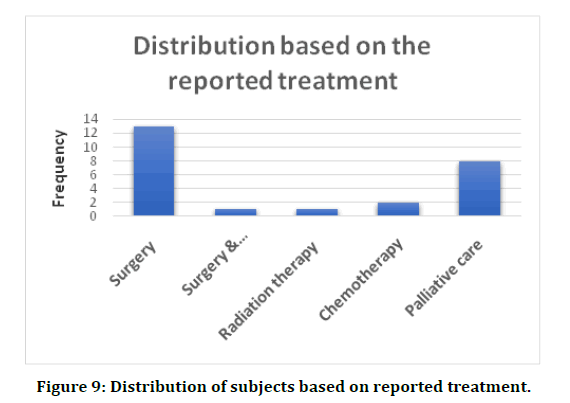
Figure 9: Distribution of subjects based on reported treatment.
| Age | Frequency | Percentage (%) |
|---|---|---|
| 29 and Below | 4 | 6.3 |
| 30 – 39 | 2 | 3.2 |
| 40 – 49 | 8 | 12.7 |
| 50 – 59 | 13 | 20.6 |
| 60 – 69 | 10 | 15.9 |
| 70 and above | 26 | 41.3 |
| Total | 63 | 100 |
| Mean | 61.05 | |
| Standard deviation | 17.95 | |
Table 1: Mean age of the study subjects.
| TimeLine (Days) | Frequency (Cases) | Percentage (%) |
|---|---|---|
| 0 day | 6 | 18.2 |
| 2 days | 2 | 6.1 |
| 3 days | 2 | 6.1 |
| 5 days | 1 | 3 |
| 6 days | 1 | 3 |
| 7 days | 3 | 9.1 |
| 8 days | 3 | 9.1 |
| 9 days | 2 | 6.1 |
| 10 days | 1 | 3 |
| 16 days | 1 | 3 |
| 17 days | 1 | 3 |
| 23 days | 2 | 6.1 |
| 24 days | 1 | 3 |
| 29 days | 1 | 3 |
| 30 days (one month) | 1 | 3 |
| 33(1 month and 3 days) | 2 | 6.1 |
| 123(4 months and 3 days) | 1 | 3 |
| 146(4 months and 26 days) | 1 | 3 |
| 210(7 months) | 1 | 3 |
| Total | 33 | 100 |
| Mean | 24.27 | |
| Standard deviation | 46.06 | |
Table 2: Timeline analysis between first consultation till date of final diagnosis.
| TimeLine (Days) | Frequency (Cases) | Percentage (%) |
|---|---|---|
| 1 day | 2 | 11.8 |
| 2 days | 3 | 17.6 |
| 4 days | 1 | 5.9 |
| 7 days | 1 | 5.9 |
| 13 days | 1 | 5.9 |
| 23 days | 2 | 11.8 |
| 29 days | 2 | 11.8 |
| 37(1 month and 7 days) | 1 | 5.9 |
| 54(1 month and 24 days) | 1 | 5.9 |
| 56(1 month and 26 days) | 1 | 5.9 |
| 336(11 months and 6 days) 1 5.9 | 1 | 5.9 |
| 781(2 years, 26 months, and 1 days) | 1 | 5.9 |
| Total | 17 | 100 |
| Mean | 82.35 | |
| Standard deviation | 196.53 | |
Table 3: Timeline analysis for the time needed between final diagnosis to that of initiation of treatment.
| Treatment | Frequency | Percentage |
|---|---|---|
| Surgery | 13 | 20.6 |
| Surgery and Radiation therapy | 1 | 1.6 |
| Radiation therapy | 1 | 1.6 |
| Chemotherapy | 2 | 3.2 |
| Palliative care | 8 | 12.7 |
| Not reported | 38 | 60.3 |
| Total | 63 | 100 |
Table 4: Distribution of treatment.
Diagnosis
The aim of this study is to estimate the professional delay and the treatment delay of oral cancer patients visiting Asir Central Hospital and to explore professional related factors that may cause any diagnostic delay. The data were collected from the written records of the patients only. Several studies reported results based on structured interviews or questionnaires, which may minimize their scientific value. Relying on patients to recall past experiences may not be totally accurate. Memories could be distorted, filled with gaps, withheld, expressed differently, or misinterpreted. Unexpectedly, the total number of oral cancer cases reported within ten years in Asir Central Hospital was low. This could be explained by the fact that this hospital is a public hospital, and it is accessible only to Saudis and non-Saudis working in the public sector. In addition to that, there are much other public and private hospitals in the region, military families and retirees can receive care through military hospitals, and some patients may prefer to travel to other major cities or even outside the country to receive the health care needed.
Males were found to be more commonly affected by 36 (57.1%) than females 27 (42.9%). Our result is consistent with several epidemiological studies in Saudi Arabia. However, Jazan, southern Saudi Arabia, was reported to be an exception where females are more commonly affected than males [5]. In Jazan, oral cancer is the most common cancer in females and the second most common cancer in males [4]. This may be due to increased consumption of smokeless tobacco, Shamma, among females.
Most of the patients were Saudis (95.2%), and only three patients were non-Saudis (4.8%). All Saudis and non-Saudis, who are working in the public sector, have full access to all public health care services for free in Saudi Arabia. But, for those Saudis and non-Saudis working in the private sector, their employers are required to provide them with cooperative health insurance and to pay for health cover costs. Both public and private hospitals provide full access to health services to all residents during crises and emergencies [31-35]. Our findings explored some challenges encountered mainly by the citizens in Saudi Arabia, which will lead to the diagnostic delay, but the challenges and the consequences are expected to be more for the expatriates in such situations. It is always encouraged to have better access to health care services for everybody, especially for those people who are financially insecure. Our findings showed that the mean age was 61.05 years old, which is consistent with the age range reported by other studies in Saudi Arabia, ranging from 48.6 years to 65 years. Most oral cancer patients were also reported to be in the range of 50 to 60 years of age in Arab countries [5,36]. The distribution of the first consulting health care provider showed that 18 patients had their first consultation with a dentist and 17 patients with a physician. The first presentation patterns may vary from one country to another. In Japan, patients seek medical attention by consulting a dentist (59%) more frequently than a physician (20.1%); but in Finland, more than 80% of oral cancer patients’ first consultations were with a physician. Canada was also one of those countries where most oral cancer patients were referred by physicians (66%) more commonly than dentists. (24.7%) [24,37]. This could be partially explained by differences in health care systems, referral systems applied in those countries, low numbers of dentists, difficulty in accessing the dental services, insurance policies, the protocols of patients’ classification to receive medical or dental urgent care. furthermore, this may also be related to a misconception among some societies that dentists are for teeth and gums only [26].
The most common tumor site in our study was the tongue, which is consistent with many studies in the literature [38,39]. In Saudi Arabia, the tongue is the most commonly affected site, followed by the floor of the mouth and alveolar ridge [5]. The site of the primary lesion may have a prognostic value since it may be related to diagnostic delay or diagnosis at advanced stages [40]. The chances are limited for early detection of oral cancer if the primary site is in the posterior part of the oral cavity. The tongue, buccal mucosa, and lip cancer tend to be diagnosed at earlier stages than floor of the mouth and retromolar trigone [41]. It is worth noting that the self-examination of the oral cavity would also be more challenging to the patients if those potentially malignant lesions are located far posteriorly [42]. That is particularly true if those lesions are not associated with pain or swelling that disturb the patient’s quality of life from a functional or aesthetic point of view.
In our study, Squamous cell carcinoma constituted (77.8%) of the oral cancer cases, followed by 4 cases diagnosed with basal cell carcinoma (6.3%) and 3 cases diagnosed with non-Hodgkin’s lymphoma (4.8%). In the literature, squamous cell carcinoma is the most common histopathologic type of oral cancer (90%) [1,6]. Squamous cell carcinoma was also reported to be the most common type of oral cancer in Saudi Arabia [5]. In contrast, the mucosal basal cell carcinomas were reported to be rare in the literature [43]. Similarly, Non-Hodgkin’s lymphomas are not common malignancies of the oral and maxillofacial regions [44].
Staging of the cancer is a critical factor in determining the prognosis. In this study, 18 cases were diagnosed with stage 2, and only 2 cases with stage 1. The data of the remaining cases did not show any reports about the cancer stage. It is possible that some patients refused to be treated at Asir Central Hospital and asked to be referred directly to one of the tertiary hospitals or specialist centers in the kingdom without further assessment or investigations. It is also possible that some patients had limited access to the public health care system or had chosen to be treated in a private hospital or even travel outside the kingdom. Other factors could be related to the patient’s denial of the problem, rejection of the treatment, using traditional medicine, and herbal remedies. Accordingly, the distribution of therapy provided would also be affected. For those cancer cases, who decided to receive the treatment at Asir Central Hospital, surgery was found to be the most common treatment option (20.6%), followed by palliative care (12.7%).
In Saudi Arabia, it was reported that most patients presented initially at stage III and stage IV, which explains the dropping of the five-year survival rate down to the range of 12.9% to 24%. Hence, the majority of oral cancer cases received palliative treatment eventually [5]. It is worth noting that studies have shown limited evidence and conflicting results regarding the association between the diagnostic delay and the stage at which cancer was diagnosed [45]. However, patients with advanced cancer stages tend to experience longer diagnostic delays relative to those with early stages of cancer [46]. The timeline between the date of 1st consultation to the date of diagnosis shows that the meantime was 24.27 days, and many cases were diagnosed on the same day of consultation 18.2%. To confirm the diagnosis of oral cancer, one must evaluate the clinical and histological findings thoroughly. Many cases were diagnosed on the same day of consultation 18.2%. This indicates that some patients were able to provide accepted histopathological evidence to confirm their diagnosis in their first visits to Asir Central Hospital. The biopsy could be done at other local hospitals such as university hospitals, private hospitals, or other public hospitals. Currently, many challenges still exist in providing minor surgical procedures at primary care centers in Saudi Arabia [47-49]. This would be especially true for biopsy services, which need additional efforts to establish an organized system to cover all required technical steps efficiently to confirm the final diagnosis. In some countries, biopsy services could be obtained at the primary care centers. In UK, only 15% of primary care dentists had performed an oral biopsy within two years, possibly, because of a lack of skills and knowledge, extended time consumption, risk of referral delay, and fear of misdiagnosis and legal consequences [24]. The mean time needed from the first consultation to the final diagnosis was 24.27 days. The contributing factors to the diagnostic delay could be related to scheduling delay as well as professional delay. The quality of the histopathologic services should also be considered and monitored by measuring the turnaround time (TAT). The college of American pathologists defined Turnaround Time (TAT) as the time from the day the specimen is received in the lab to the day the final report is signed out. The turnaround time should be within two working days for most routine cases [50-52]. However, there are many technical factors that could extend the turnaround time needed, including labeling errors, insufficient tissue, nonrepresentative samples, fixation, decalcification, re-sectioning, tissue orientation, special staining, and molecular investigations [51]. The delay in the completion of a surgical pathology report may lead to a delay in treatment planning or initiation, which may increase the rates of morbidity and mortality eventually [53]. The mean time needed from the final diagnosis until the initiation of the treatment at Asir Central Hospital was 82.35 days. However, it was noted that surgical treatment was provided in a relatively short time. Four patients were referred to a tertiary hospital outside the southern region. Tracking those patients revealed that the meantime needed from the referral date to the treatment initiation date at those hospital/medical centers was 81.75 days, which is comparable to the time required to receive the proper treatment at Asir Central Hospital. This reflects the significant challenges faced by Asir Central Hospital in serving the local people of this part of the kingdom.
The first step in the diagnosis of oral cancer depends on detecting any potentially malignant lesion, which will lead to the diagnosis. It came as no surprise that the patient’s role in this chain of actions will probably be the most significant factor in determining the consequences in many circumstances. In other words, seeking medical attention is the initiation step needed, and it is the rate-limiting step at the same time. It was estimated that patient delay accounts for approximately 60% of the diagnostic delay of cancers [54]. It could range from 1.6 to 5.4 months of time. It has been estimated that patient delay would significantly worsen the prognosis if it exceeds three months [26,55]. Unfortunately, it may take more than 3 months for about 30% of oral cancer patients before their first consultation with a health care provider. Generally, the patient delay could be caused by sociodemographic status, low socioeconomic levels, cognitive and psychological factors. It seems that fear, poor symptoms recognition/ interpretation, or denial of their severity were found to be the most common causes of patient delay. It was also reported that some patients avoid visiting their doctors, who were difficult to talk to [54-56]. In Saudi Arabia, a general public survey showed that there was a lack of knowledge and awareness of oral cancer [57]. Another study reported that about 68% of the patients had no knowledge of the basic information of head and neck cancer [58]. Cigarette smoking is a major public health concern in Saudi Arabia, with high rates of prevalence reported among adolescents (15% to 39.6%). In contrast, alcohol is illegal in Saudi Arabia, and many studies showed low epidemiological values [9]. Patient’s awareness and knowledge about oral cancer could minimize the diagnostic delay. The chances of visiting a health care provider would be more likely if the patient had knowledge about oral cancer [59]. Oral cancer prevention programs are strongly recommended to increase public awareness. Such programs may include anti-tobacco campaigns and self-examination of the mouth to promote early detection of cancer, although oral self-examination was reported to be more complicated in comparison to breast or skin examination [60].
The quality of health care systems varies widely among different countries and that could cause further delay for some patients beyond their control. Stark disparities in accessing oral health services could also be seen across Europe and USA, and patients with unstable legal or financial status such as those who are uninsured, homeless, migrants, refugees, and stateless; may face many obstacles in accessing the health care system [25,37]. Those health care system-related challenges should be monitored and improved continuously. With the currently available knowledge and tools, health care providers should not be a part of the delay problem rather than being a solution. The onset of the professional delay starts at the time when patients initially present to a health care provider, and It could range from 5 to 21 weeks. This could be partially explained by the differences in defining the endpoints of professional delay in the literature. Some authors considered the time of the referral as the endpoint, while others extended the duration up to the time of the biopsy or even the time of the treatment [26].
The prognosis will significantly worsen if the professional delay exceeds 6 months [55]. The causes may include insufficient clinical examination, lack of knowledge, lack of experience, low index of suspicion, co-morbidity, poor treatment planning, inefficient follow‑up, referral criteria of suspicious lesions, and laboratory investigations [61-66]. Among those possible causes, referral delay could have a strong association with the survival of oral cancer [66]. It was reported that dentists tend to delay referrals for at least two days in comparison to physicians; possibly, because of the dental interventions or the use of antibiotic therapy before considering any referral. Another study showed that physicians were more suspicious of oral cancer and more accurate in their diagnosis and early referring to oral cancer cases [67-69]. The importance of patient rapport should not be underestimated. Poor communication skills may destroy the mutual trust relationship between the patient and the health care provider and may discourage some patients from visiting their doctors.
It was estimated that the average number of oral cancer cases seen by a general dentist and a physician did not exceed 10 cases during their professional life [69]. A systematic oral examination to rule out the cancer was reported to be a common practice among 83%-86% of the general dental practitioners in Europe and the USA, but the values of sensitivity and specificity were found to be low [70]. The low sensitivity values indicate that the ability to detect oral cancer correctly was low. On the other hand, the low specificity values reflect an increasing burden on the referral system with a high number of false-positive cases leading to a disturbance of the referral services of oral cancer cases, unnecessary anxiety to many healthy patients and their families, and increased costs for the health care system. In Saudi Arabia, A study aimed to assess the knowledge and practice of dentists in Riyadh city showed that most dentists failed to examine their patients for oral cancer routinely [71]. Another study concluded that there was room for improvement of both knowledge and awareness of oral cancer among the general practitioners in Saudi Arabia [72].
It is important to note that our study was conducted only at Asir Central Hospital, which is a secondary referring hospital. Patients could have access through routine referrals to the out-patient department or through the emergency department in the hospital directly. The secondary care delay was the focus of this study, and any component of diagnostic delay that happened prior to entering Asir Central Hospital was not investigated. Accordingly, both primary care delay and patient delay were excluded. If those components were added, the total time of the diagnostic delay would be worse than our findings by additional weeks or even months, as explained above. In Australia, the average number of consultations at primary care centers before referring patients to secondary care services for both physicians and dentists was estimated to be 2.8 in Australia and 4.3 in Thailand [73,74]. In the USA, the average time from the first consultation with a clinician at primary care centers until biopsy or referral to secondary care was 35.9 days [75].
The significance of targeting dental and medical practitioners to increase their levels of knowledge and awareness about oral cancer and the importance of its early detection cannot be overemphasized. The implementation of active programs at the undergraduate level as well as the professional level could be achieved by curriculum reviewing, improving dental training, continuing education, postgraduate courses, using adjunct methods to increase diagnostic accuracy, facilitating the professional communication for consultations, establishing a solid referral system with clear guidelines to minimize any scheduling delay, and by ensuring that patients get a specialist consultation within two weeks if there was no positive response to the initial suggested treatment [56,75,76].
The current results should be interpreted with caution. The study was targeting patients referred to Asir Central Hospital, the secondary care delay. It did not cover the possible factors encountered by patients “the patient delay”; or those obstacles of primary care providers, scheduling, and referral at the primary care centers “the primary care delay”. The results cannot be generalized since the sample size is relatively small and composed of Saudi citizens mostly. The data showed some limitations in investigating other contributing factors in causing oral cancer and in reviewing the histopathologic slides of the selected cases. Furthermore, some studies measured the median rather than the mean to avoid the effects of the extreme values on a wide range of time distribution [25].
Conclusion
In conclusion, the mean time between the date of 1st consultation with a health care provider at Asir Central Hospital to the date of the final diagnosis was 24.27 days. The mean time needed between the definitive diagnosis to the time of treatment initiation at Asir Central Hospital was 82.35 days, which was comparable to the referral time required to receive the treatment at a tertiary hospital/medical center. Our results are consistent with some published studies but should be interpreted carefully. Further investigations are needed to assess diagnostic delay components more comprehensively and at a larger scale. Our study highlights the structural needs to improve the quality of the health care services by closing the gaps and addressing the delay issues in the diagnosis and treatment of oral cancer.
Competing Interests
The authors declare that they have no competing interests.
Acknowledgement
The authors would like to thank Asir Central Hospital for giving permission to access the medical records department.
References
- Montero PH, Patel SG. Cancer of the oral cavity. Surg Oncol Clin N Am 2015; 24:491–508.
- Podlodowska J, Szumiło J, Podlodowski W, et al. Epidemiology and risk factors of the oral carcinoma. Pol Merkur Lek Organ Pol Tow Lek 2012; 32:135–137.
- Yu AJ, Choi JS, Swanson MS, et al. Association of race/ethnicity, stage, and survival in oral cavity squamous cell carcinoma: A SEER study. OTO Open 2019; 3:2473974X19891126.
- Alhazzazi TY, Alghamdi FT. Head and neck cancer in Saudi Arabia: A systematic review. Asian Pac J Cancer Prev 2016; 17:4043-4048.
- Basha S. The prevalence of oral cancer in Saudi Arabia–A systematic review. Ann Med Health Sci Res 2019; 9:5.
- Jemal A, Bray F, Center MM, et al. Global cancer statistics. Cancer J Clin 2011; 61:69-90.
- Miranda-Filho A, Bray F. Global patterns and trends in cancers of the lip, tongue and mouth. Oral Oncol 2020; 102:104551.
- Abdel Rahim BE, Mahfouz MS, Yagoub U, et al. Practice and attitude of cigarette smoking: a community-based study. PloS One 2014; 9:e92939.
- Ahmed HG. A review on the etiology of oral cancer in Saudi Arabia. J Med Res Health Scie 2018; 7:161-170.
- Quadri MFA, Alharbi F, Bajonaid AMS, et al. Oral squamous cell carcinoma and associated risk factors in Jazan, Saudi Arabia: A hospital based case control study. Asian Pac J Cancer Prev 2015; 16:4335–4338.
- Sathish N, Wang X, Yuan Y. Human papillomavirus (HPV)-associated oral cancers and treatment strategies. J Dent Res 2014; 93:29S-36S.
- Tanaka TI, Alawi F. Human papillomavirus and oropharyngeal cancer. Dent Clin North Am 2018; 62:111–20.
- Huber MA. Adjunctive diagnostic techniques for oral and oropharyngeal cancer discovery. Dent Clin North Am 2018; 62:59–75.
- Lingen MW, Kalmar JR, Karrison T, et al. Critical evaluation of diagnostic aids for the detection of oral cancer. Oral Oncol 2008; 44:10–22.
- Ghantous Y, Yaffi V, Abu-Elnaaj I. Oral cavity cancer: Epidemiology and early diagnosis. Refuat Ha-Peh Veha-Shinayim 2015; 32:55–63.
- Villa A, Akintoye SO. Dental management of patients who have undergone oral cancer therapy. Dent Clin North Am 2018; 62:131–142.
- Shanti RM, O’Malley BW. Surgical management of oral cancer. Dent Clin North Am 2018; 62:77–86.
- Sroussi HY, Epstein JB, Bensadoun RJ, et al. Common oral complications of head and neck cancer radiation therapy: Mucositis, infections, saliva change, fibrosis, sensory dysfunctions, dental caries, periodontal disease, and osteoradionecrosis. Cancer Med 2017; 6:2918–2931.
- Amemiya K, Shibuya H, Yoshimura R, et al. The risk of radiation-induced cancer in patients with squamous cell carcinoma of the head and neck and its results of treatment. Br J Radiol 2005; 78:1028–1033.
- Dracham CB, Shankar A, Madan R. Radiation induced secondary malignancies: a review article. Radiat Oncol J. 2018 Jun;36(2):85–94.
- Valdez JA, Brennan MT. Impact of oral cancer on quality of life. Dent Clin North Am 2018; 62:143–154.
- Mupparapu M, Shanti RM. Evaluation and staging of oral cancer. Dent Clin North Am 2018; 62:47–58.
- Joshi P, Nair S, Chaturvedi P, et al. Delay in seeking specialized care for oral cancers: Experience from a tertiary cancer center. Indian J Cancer 2014; 51:95–97.
- Grafton-Clarke C, Chen KW, Wilcock J. Diagnosis and referral delays in primary care for oral squamous cell cancer: A systematic review. Br J Gen Pract J R Coll Gen Pract 2019; 69:112–126.
- https://www.intechopen.com/books/oral-cancer/timing-of-oral-cancer-diagnosis-implications-for-prognosis-and-survival
- Güneri P, Epstein JB. Late stage diagnosis of oral cancer: components and possible solutions. Oral Oncol 2014; 50:1131–1136.
- Miller KD, Simon M. Global perspectives on cancer: Incidence, care, and experience. Santa Barbara, California: Praeger 2015.
- Hansen RP, Vedsted P, Sokolowski I, et al. Time intervals from first symptom to treatment of cancer: a cohort study of 2,212 newly diagnosed cancer patients. BMC Health Serv Res 2011; 11:284.
- Dwivedi AK, Dwivedi SN, Deo S, et al. An epidemiological study on delay in treatment initiation of cancer patients. Health (N Y). 2012; 4:66–79.
- Stefanuto P, Doucet JC, Robertson C. Delays in treatment of oral cancer: A review of the current literature. Oral Surg Oral Med Oral Pathol Oral Radiol 2014; 117:424–429.
- Nevid JS. Essentials of psychology: Concepts and applications. Fifth edition. Australia; Boston, MA: Cengage Learning; 2018; 559.
- Brown A, Ravichandran K, Warnakulasuriya S. The unequal burden related to the risk of oral cancer in the different regions of the Kingdom of Saudi Arabia. Community Dent Health 2006; 23:101–106.
- Alsanosy RM. Smokeless tobacco (Shammah) in Saudi Arabia: A review of its pattern of use, prevalence, and potential role in oral cancer. Asian Pac J Cancer Prev 2014; 15:6477–6483.
- Alharbi F, Quadri MFA. Individual and integrated effects of potential risk factors for oral squamous cell carcinoma: A hospital-based case- control study in jazan, saudi arabia. Asian Pac J Cancer Prev 2018; 19.
- Almalki M, Fitzgerald G, Clark M. Health care system in Saudi Arabia: an overview. East Mediterr Health J Rev 2011; 17:784–793.
- Al-Jaber A, Al-Nasser L, El-Metwally A. epidemiology of oral cancer in arab countries. Saudi Med J 2016; 37:249–255.
- Groome PA, Rohland SL, Hall SF, et al. A population-based study of factors associated with early versus late stage oral cavity cancer diagnoses. Oral Oncol 2011; 47:642–647.
- Moore SR, Johnson NW, Pierce AM, et al. The epidemiology of tongue cancer: a review of global incidence. Oral Dis. 2000; 6:75–84.
- Warnakulasuriya S. Global epidemiology of oral and oropharyngeal cancer. Oral Oncol 2009; 45:309–316.
- Brouha XDR, Tromp DM, Hordijk GJ, et al. Oral and pharyngeal cancer: analysis of patient delay at different tumor stages. Head Neck 2005; 27:939–945.
- Gorsky M, Dayan D. Referral delay in diagnosis of oro/oropharyngeal cancer in Israel. Eur J Cancer B Oral Oncol 1995; 31:166–168.
- Andersen BL, Cacioppo JT. Delay in seeking a cancer diagnosis: delay stages and psychophysiological comparison processes. Br J Soc Psychol 1995; 34:33–52.
- Loh T, Rubin AG, Brian Jiang SI. Management of mucosal basal cell carcinoma of the lip: An update and comprehensive review of the literature. Dermatol Surg Off Publ Am Soc Dermatol Surg 2016; 42:1313–1319.
- Abdelwahed Hussein MR. Non-hodgkin’s lymphoma of the oral cavity and maxillofacial region: A pathologist viewpoint. Expert Rev Hematol 2018; 11:737–748.
- Gómez I, Seoane J, Varela-Centelles P, et al. Is diagnostic delay related to advanced-stage oral cancer? A meta-analysis. Eur J Oral Sci 2009; 117:541–546.
- Sargeran K, Murtomaa H, Safavi SMR, et al. Delayed diagnosis of oral cancer in Iran: challenge for prevention. Oral Health Prev Dent 2009; 7:69–76.
- Al-Jaber A, Da’ar OB. Primary health care centers, extent of challenges and demand for oral health care in Riyadh, Saudi Arabia. BMC Health Serv Res 2016; 16:628.
- Alfaraj AW, Alharbi W, Sebiany A. Primary healthcare physicians′ attitude and perceived barriers regarding minor surgeries. J Health Spec 2015; 3:67.
- Saleh SM, Idris AM, Vani NV, et al. Retrospective analysis of biopsied oral and maxillofacial lesions in South-Western Saudi Arabia. Saudi Med J 2017; 38:405–412.
- Alshieban S, Al-Surimi K. Reducing turnaround time of surgical pathology reports in pathology and laboratory medicine departments. BMJ Qual Improv Rep 2015; 4.
- Volmar KE, Idowu MO, Souers RJ, et al. Turnaround time for large or complex specimens in surgical pathology: A college of American pathologists q-probes study of 56 institutions. Arch Pathol Lab Med 2015; 139:171–177.
- Atanda A, Yusuf I, Haruna M. Perceived and real histopathology turnaround time: A teaching hospital experience. Niger J Surg 2017; 23:98.
- Jerjes W, Upile T, Radhi H, et al. Delay in pathological tissue processing time vs. mortality in oral cancer: short communication. Head Neck Oncol 2012; 4:14.
- Panzarella V, Pizzo G, Calvino F, et al. Diagnostic delay in oral squamous cell carcinoma: the role of cognitive and psychological variables. Int J Oral Sci 2014; 6:39–45.
- Teppo H, Alho OP. Relative importance of diagnostic delays in different head and neck cancers. Clin Otolaryngol 2008; 33:325–30.
- Crossman T, Warburton F, Richards MA, et al. Role of general practice in the diagnosis of oral cancer. Br J Oral Maxillofac Surg 2016; 54:208–212.
- Al-Maweri SA, Tarakji B, Alsalhani AB, et al. Oral cancer awareness of the general public in Saudi Arabia. Asian Pac J Cancer Prev 2015; 16:3377–3381.
- Alhazzazi TY. Evaluation of head and neck cancer awareness and screening status in Jeddah, Saudi Arabia. Asian Pac J Cancer Prev 2016; 17:1135–1139.
- Tromp DM, Brouha XDR, Hordijk GJ, et al. Patient factors associated with delay in primary care among patients with head and neck carcinoma: A case-series analysis. Fam Pract 2005; 22:554–559.
- Quadri MFA, Saleh SM, Alsanosy R, et al. Effectiveness of an intervention program on knowledge of oral cancer among the youth of Jazan, Saudi Arabia. Asian Pac J Cancer Prev 2014; 15:1913–1918.
- Jaber L, Shaban S, Hariri D. Oral cancer prevention and early detection: Knowledge and practice among Saudi Arabian healthcare practitioners. Int J Health Care Qual Assur 2012; 25:64–74.
- Jaber L, Shaban S, Hariri D, et al. Perceptions of healthcare practitioners in Saudi Arabia regarding their training in oral cancer prevention, and early detection. Int J Health Care Qual Assur 2011; 24:8–18.
- Kujan O, Alzoghaibi I, Azzeghaiby S, et al. Knowledge and attitudes of Saudi dental undergraduates on oral cancer. J Cancer Educ Off J Am Assoc Cancer Educ 2014; 29:735–738.
- Kujan O, Abuderman A, Azzegahiby S, et al. Assessing oral cancer knowledge among Saudi medical undergraduates. J Cancer Educ Off J Am Assoc Cancer Educ 2013; 28:717–721.
- Hollows P, McAndrew PG, Perini MG. Delays in the referral and treatment of oral squamous cell carcinoma. Br Dent J 2000; 188:262–265.
- McLeod NMH, Saeed NR, Ali EA. Oral cancer: Delays in referral and diagnosis persist. Br Dent J 2005; 198:681–684.
- Kantola S, Jokinen K, Hyrynkangas K, et al. Detection of tongue cancer in primary care. Br J Gen Pract 2001; 51:106–111.
- Schnetler JF. Oral cancer diagnosis and delays in referral. Br J Oral Maxillofac Surg 1992; 30:210–213.
- Sharma G, Nagpal A. Can the diagnostic delay of oral cancer by healthcare practitioners be prevented? Who should bear the blame of delay? J Fam Community Med 2015; 22:124–125.
- Downer MC, Moles DR, Palmer S, et al. A systematic review of measures of effectiveness in screening for oral cancer and precancer. Oral Oncol 2006; 42:551–560.
- Majd Hasanin M. Perception of healthcare practitioners of the importance of routine oral-cancer screening. J Dent Health Oral Disord Ther 2015; 2.
- Assiri Z, Alshehri A, Alfadhel A. Oral cancer awareness, knowledge, and practices among Saudi general dentists. Saudi J Oral Sci 2019; 6:25.
- Kaing L, Manchella S, Love C, et al. Referral patterns for oral squamous cell carcinoma in Australia: 20 years progress. Aust Dent J 2016; 61:29–34.
- Kerdpon D, Jantharapattana K, Sriplung H. Factors related to diagnostic delay of oral squamous cell carcinoma in southern Thailand: Revisited. Oral Dis 2018; 24:347–354.
- Peacock ZS, Pogrel MA, Schmidt BL. Exploring the reasons for delay in treatment of oral cancer. J Am Dent Assoc 1939. 2008; 139:1346–1352.
- Basheer B. Awareness about oral cancer among dental and medical practitioners in Riyadh, Saudi Arabia: A cross-sectional study. 2019; 11.
Author Info
Hussain Almubarak1, Mohammad Almagbol2, Saad Albishri2, Bayan Dulim, Yusra Alshahrani2, Afnan Mohammed2, Abdulrahman Alshehri2, Ibrahim Alsharif2, Sultan Mohammed Kaleem1 and M Zakirulla3*
1Assistant Professor, Department of Diagnostic Sciences and Oral Biology, College of Dentistry, King Khalid University, Abha, Saudi Arabia2General Dental Practitioners, Saudi Arabia
3Department of Pediatric Dentistry and Orthodontic Sciences, College of Dentistry, King Khalid University, Abha, Kingdom of Saudi Arabia
Citation: Hussain Almubarak, Mohammad Almagbol, Saad Albishri, Bayan Dulim, Yusra Alshahrani, Afnan Mohammed, Abdulrahman Alshehri, Ibrahim Alsharif, Sultan Mohammed Kaleem, M Zakirulla, Secondary Care Delay in Diagnosis and Treatment of Oral at Asir Central Hospital, Saudi Arabia: A Case Series Study, J Res Med Dent Sci, 2020, 8 (7): 487-498.
Received: 26-Oct-2020 Accepted: 19-Nov-2020 Published: 26-Nov-2020
